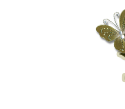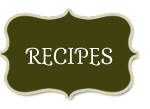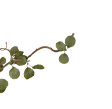There's a first for everything. After over 6 months of working at Voyageur, I decided that it was time to take up soap making! I wanted to start simple, with a basic melt and pour soap- something to suit the season of Autumn (my favorite). When I came across this neat technique for making "Tie Dye" melt and pour soap, I thought it would work perfectly in creating a maple leaf soap which would mimic a fallen leaf with it's many brilliant Autumn colours. We just received a new Mold Market Soap Mold in the shape of maple leaves. How perfect!
I divided up the 1lb block and melted it until it was a very light liquid consistency, using roughly 75% of the block as my white base and in the remainder I mixed in some Brown Iron Oxide. This made a dark chocolatey-brown. Although not a part of the initial recipe I had found, I thought that a brown swirl in the leaf would help it look more realistic.Upon melting my soap, I added the Apple Pie Fragrance (by the way, this is also a great trick for making your friends and family think you just baked a pie - the whole house smelt FANTASTIC!).
I don't have a photo to demonstrate the next step, as there simply weren't enough hands! With both soaps melted, I poured both colours into the mold slowy, at the same time. I ensured that I poured more white than brown, as I wanted the brown to be simply an accent colour.
At the same time I had my lovely assistant (my mother) stand near and intermittently spray the soap with the alcohol as I poured. You could see the labcolors begin to swirl- this looks so neat!
When I was finished filling the molds cavities with soap, I added a few more drops of Labcolor to the top, particularly around the edges, and spritzed the stop with a few more bursts of the alcohol.
The coolest part is that the Labcolors continuously swirl and move around the soap on their own- it looks like some kind of magic. I can see this being a great, entertaining project to do with kids.
I was so eager to see the fruits of my creation that I stuck them in the freezer in order to set the soap faster.
When I popped them out, I was sadly disappointed.
I also found that the Red Labcolor turned out to be a fuchsia pinky-purple colour. Not exactly what I had desired.
After seeing my results, I consulted the rest of the Voyageur team about my melt and pour mishap. They reminded me that the best thing about melt and pour soap is that you can so easily re-melt and re-pour!
To fix what I had done, I simply repeated the process that I had done, but altered my steps slightly.
I cut up and melted 2 of the 3 initial leaves I had made. I then used this for my new, lighter brown colour. I also cut up my second 1 lb block and melted it down to be my new white soap base.
This time, I did NOT use the Red Labcolor - I wanted to avoid the pink.
While I did not use the red, I was more fearless this time in adding more yellow and orange colour. I added a lot of the additional colour after filling the molds to the edges of the mold which made a very neat swirl look to the sides of the leaves.
Here is the finished product.
I am very happy with my secondary results! Over and above the practical knowledge that comes from experience, I think the most important lesson learned is that experimentation is half the fun when it comes to creating something new. Keep in mind that even if your project doesn't turn out as you had anticipated, there is great value in learning from mistakes.
Sincerely,
Britney






















No comments:
Post a Comment